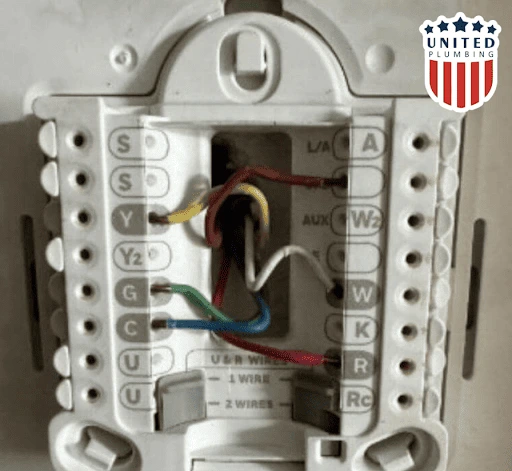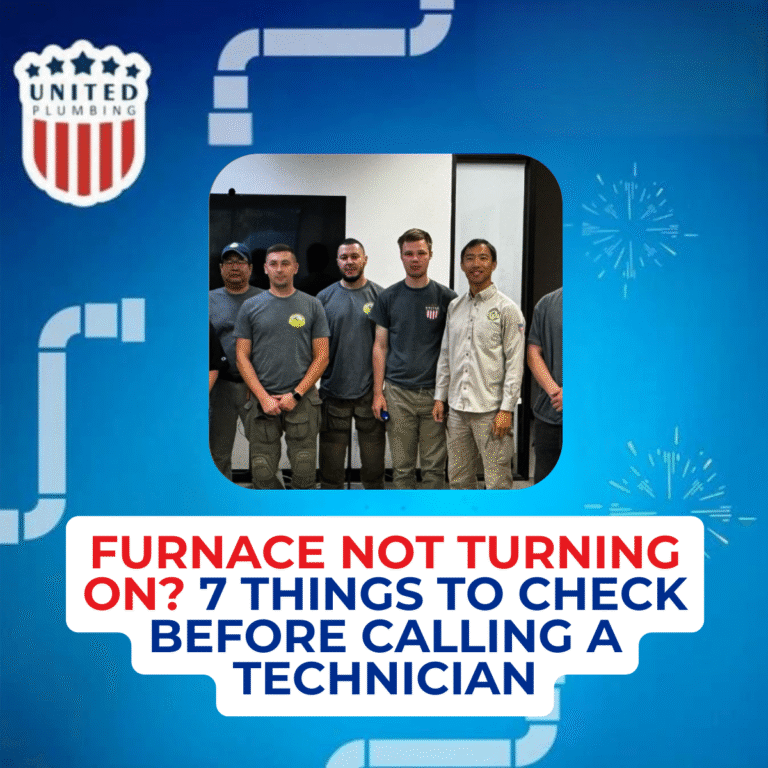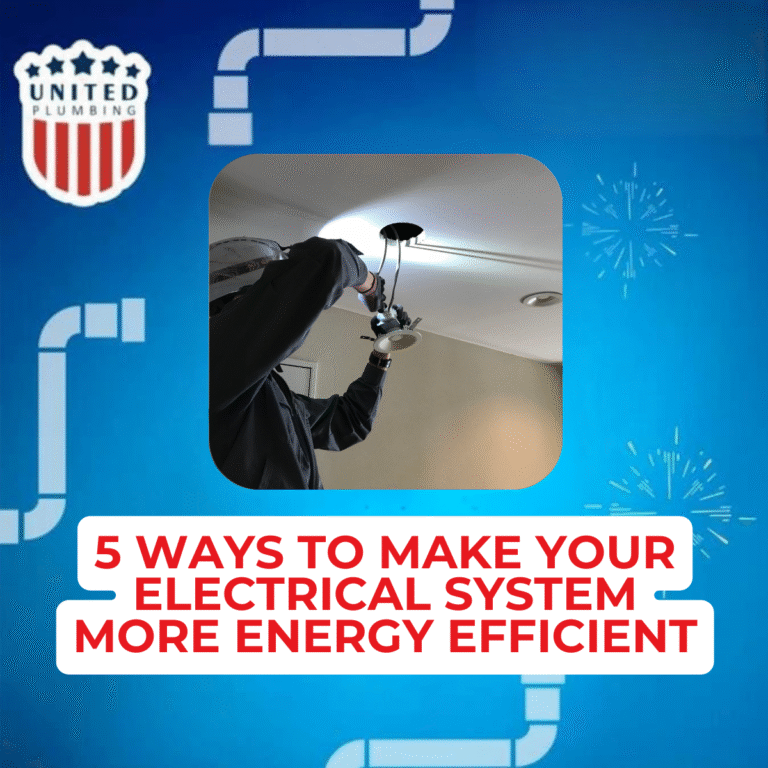FIVE-STAR TEAM WARRANTY &
SAME-DAY SERVICE
Your Complete Guide to Thermostat Wire Colors

When we are talking about your home’s thermostat installation, proper understanding of wire colors is very important for safely and correctly connecting your HVAC system. Whether you are replacing an old thermostat or upgrading to a WiFi thermostat with advanced features, knowing what each wire does can save time, prevent costly mistakes, and improve your system’s safety and efficiency.
What Are Thermostat Wires?
Thermostat wires are low-voltage connections that transport commands from your thermostat to your air handler, furnace, or air conditioner. These connections allow your heating system or cooling system to properly respond to different changes in room temperature, maintaining comfort, safety and energy efficiency throughout your home.
Thermostat Wiring Color Coding Explained
Thermostat wiring follows industry standards, but please always double-check your system’s manual or label before connecting wires. This is important. Here’s what the most common thermostat colors usually mean:
- Red wire (R terminal): Power from the power source, typically 24VAC
- White wire (W terminal): Signals heat (used in gas furnace or boiler maintenance)
- Yellow wire (Y terminal): Activates the cooling system or air conditioning
- Green wire (G terminal): Controls the blower fan or fan relay
- Blue or Black wire (C terminal): Common wire for continuous power, especially for programmable thermostats and WiFi thermostats
- Orange wire: Controls the reversing valve in heat pump systems
- Brown wire: Sometimes used for auxiliary heat or outdoor temperature sensors
Some systems might include a B wire, RC terminal, RH terminal, or B terminal depending on the thermostat model or dual transformer systems.
Common Thermostat Wire Terminals
Each wire connects to a specific wire terminal on the thermostat, including:
- R / RH / RC: Power
- W / W1 / W2: Heating stages
- Y / Y1 / Y2: Cooling stages
- G: Fan control
- C: Common wire for 24VAC power
- O/B: Reversing valve for heat pumps
- E / AUX: Auxiliary heat
These connections ensure compatibility with single-stage or multi-stage systems, whether you are dealing with a modern thermostat or an old thermostat.
Wiring Differences in Various HVAC Systems
Different types of systems — from heat pump installation to furnace repair — use different combinations of wiring:
- Heat pump systems require the use of an O/B wire for the reversing valve
- Gas furnaces typically involve a white W wire and red R wire
- Air conditioning replacement projects may involve the yellow wire, G wire, and C wire
It is extremely important to know your HVAC equipment, system type, and climate control needs before proceeding.
Thermostat Wiring Diagram
A Thermostat Wiring Diagram is a very useful visual guide when installing a new thermostat or fixing issues with wiring in your current thermostat. It shows the corresponding terminals, wire labels, and layout for your specific system, whether you are installing in a smart home, upgrading Indoor Air Quality features, or optimizing your temperature settings.
Best Practices for DIY Installation
If you are planning to install a thermostat yourself, here are a little bit safety and setup tips:
- Shut off power at the circuit breaker
- Use a wire stripper to cleanly expose wire ends
- Label each wire using stickers or tape
- Match wires to the correct terminals using your diagram
- Check for high voltage or control board compatibility
- Consider a C-Wire Adapter if your system does not have a common wire
When to Call a Professional
While DIY is possible, some systems — like heat pump systems, dual transformer systems, or those involving high-voltage HVAC wiring — should be left to an HVAC technician near me. A certified HVAC contractor ensures proper handling of control devices, power supply issues, and corresponding terminals during setup.
For homes and businesses in California, United HVAC, Plumbing & Electrical is your trusted local partner. We do everything from installing a thermostat and furnace installation to full air conditioning and heating services, supported by licensed professionals and excellent customer reviews.
Final Thoughts
Mastering thermostat wire colors is not just for the professionals — with a little bit of guidance and caution, homeowners can understand their HVAC wiring and make smart decisions about thermostat models, climate control, and system upgrades.
Whether you are working on boiler maintenance, furnace repair, or a full HVAC service, understanding your wiring setup is important to long-term comfort and energy efficiency.
Need assistance? Don’t guess with wires — call the experts at United HVAC, Plumbing & Electrical for reliable HVAC services across California.
Contact us today for a consultation or to schedule your next thermostat installation.
Post views: 1029
Frequently Asked Questions
What do the different thermostat wire colors mean?
Each wire color usually has a standard job. For example, red is for power, white is for heat, yellow is for cooling, green runs the fan, and blue or black is often used for the common wire. But always double-check — wiring can vary by system.
Do I need the blue (C) wire to install a smart thermostat?
Most smart thermostats need a constant source of power, which the C wire provides. If you don’t have one, you might need a C-wire adapter or call a pro to run a new wire.
What’s the difference between RC and RH terminals?
RC is power for cooling, and RH is power for heating. Some thermostats use a jumper between them if your system uses one transformer. If you have two transformers (dual systems), you’ll connect both wires separately.
Can I just match colors when replacing my thermostat?
Not always. Wire colors usually follow a standard, but not everyone installs them that way. It’s better to check where each wire is connected on your old thermostat and HVAC system — or label them as you disconnect.
I only have four wires—can I still install a new thermostat?
Possibly! Many basic thermostats work with four wires, especially for simple heating and cooling systems. But for features like WiFi or extra stages of heating/cooling, more wires (like a C wire) may be needed.
Latest posts

Furnace Not Turning On? 7 Things to Check Before Calling a Technician
When your furnace won’t turn on, it’s stressful. The house is getting colder, everyone’s complaining, and you’re...

5 Ways to Make Your Electrical System More Energy Efficient
Improving your home’s electrical energy efficiency does not always require major upgrades or expensive renovations....


If you still have questions or need advice, please leave a request and we will contact you as soon as possible
Need a plumber and got no clue where to start?
(408) 539-6936Facing a plumbing issue? Get a FREE in-person estimate and quick solutions from our skilled technicians, ensuring your home runs smoothly again!
